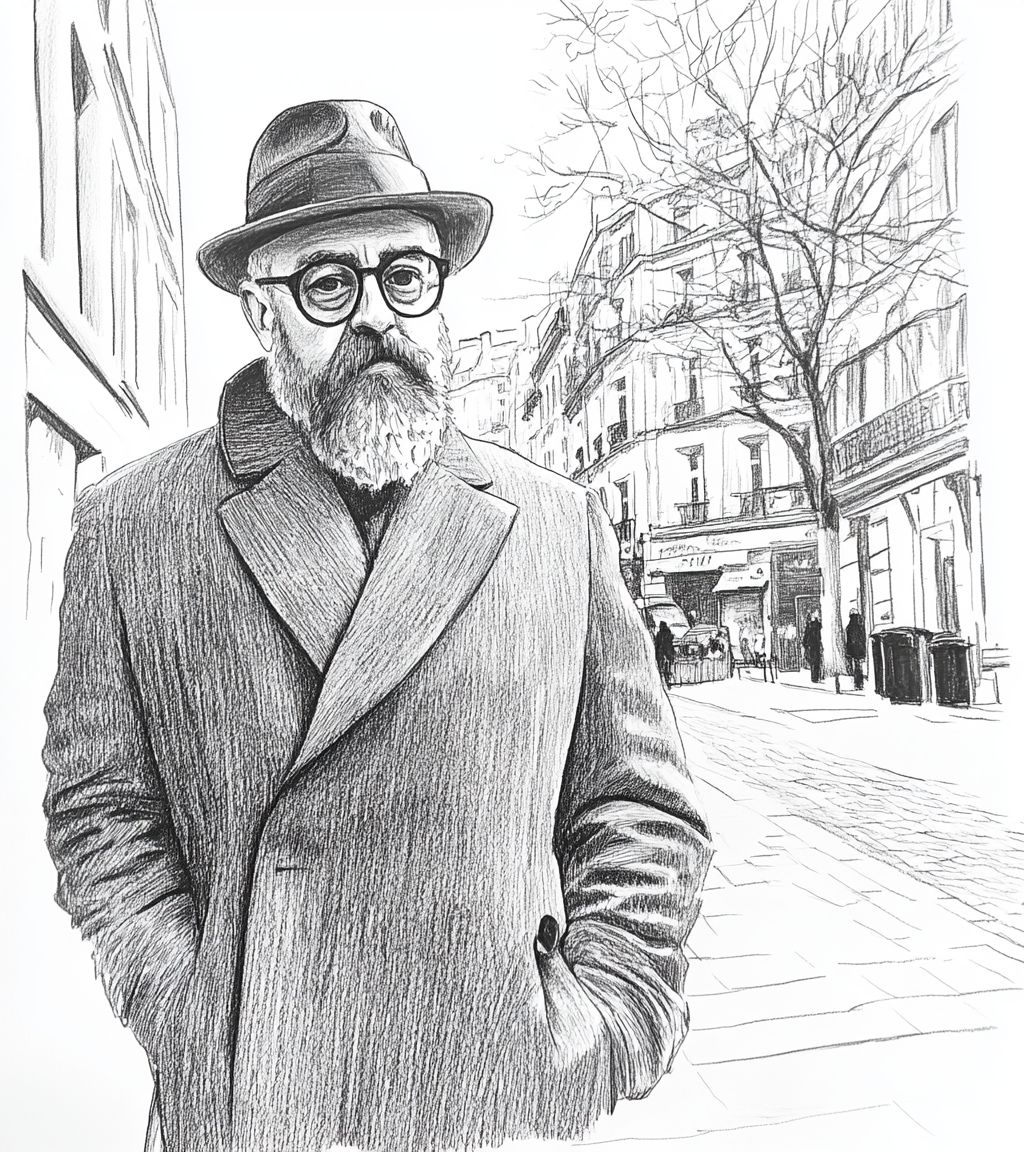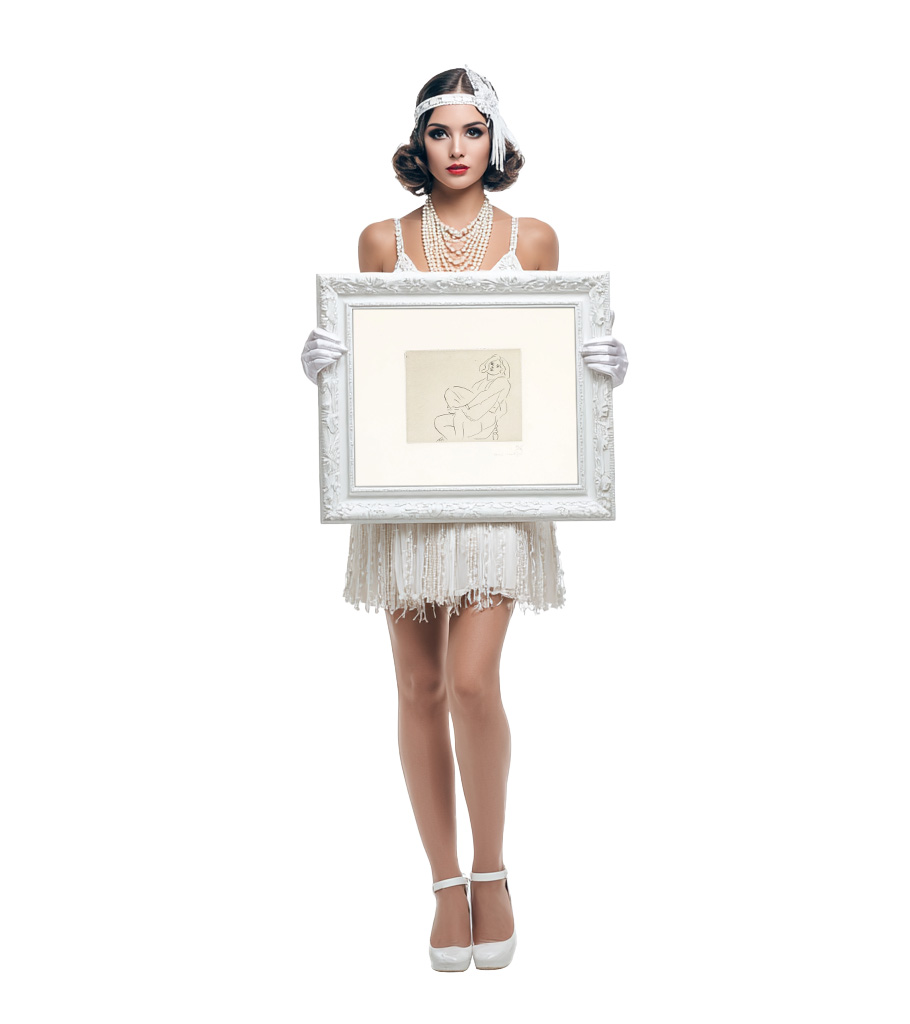
Henri Matisse
Originally studying law, Henri Matisse later turned to painting and trained at the Académie Julian and the École des Beaux-Arts in Paris. Matisse became one of the most influential artists of the 20th century and a leader of the Fauvist movement. Over his long career, he lived and worked in various parts of France and also spent significant time in Nice and Vence, where his later work, including the famous paper cut-outs, was created.
Matisse is best known for his bold use of color, fluid lines, and decorative compositions. As a founder of Fauvism, he embraced pure, vibrant color as a means of expression rather than representation. His work often depicted still lifes, nudes, interiors, and Mediterranean landscapes. In his later years, he pioneered a new technique called “cut-outs” or “gouaches découpées,” creating large-scale compositions by cutting painted paper into abstract shapes and arranging them into dynamic forms. Matisse’s art emphasizes joy, harmony, and balance, often described as visual poetry.
Some of Matisse’s most iconic works include Woman with a Hat (1905), The Joy of Life (1905–06), The Red Studio (1911), Dance (1910), and Blue Nude II (1952). His career was marked by numerous solo exhibitions and retrospectives, including major shows at the Museum of Modern Art (MoMA) in New York, Tate Modern in London, and the Centre Pompidou in Paris. In 2014, MoMA and Tate Modern jointly organized the groundbreaking exhibition Henri Matisse: The Cut-Outs, showcasing his late-period paper works and reaffirming his enduring influence on modern art.
Collected by major institutions and notable private collectors:
— Los Angeles County Museum of Art— National Gallery of Art, Washington, D.C.
— Centre Pompidou
— Hermitage
— Tate
Notable sales and auction records:
— Odalisque couchée aux magnolias, USD 80,7 million at Christie's, New York, 2018— Nu de dos, 4 état (Back IV), USD 48,8 million at Christie's, New York, 2010
— Les coucous, tapis bleu et rose, EUR 25,9 million at Christie's, Paris, 2009
Artworks and Paintings
Biography and Artistic Career Highlights
Henri Matisse was born on December 31, 1869, in Le Cateau-Cambrésis, northern France, into a family of grain merchants. His childhood was spent in a provincial setting, far from major artistic centers. Initially, he prepared for a career in law and in 1887 moved to Paris to study law. However, Matisse later became interested in painting and decided to dedicate his life to it.
1891 — entered the Académie Julian in Paris, then studied under Gustave Moreau at the École des Beaux-Arts, where he met future masters of the avant-garde.
1895–1900 — a period of exploration: he experimented with Post-Impressionism, absorbing the influence of Van Gogh, Cézanne, and Gauguin.
1905 — participated in the Salon d’Automne in Paris, where his works, along with those of André Derain, shocked the public. Critic Louis Vauxcelles called the artists «wild beasts» (fauves), giving rise to the name «Fauvism». Matisse became the leader of this movement.
1906–1910 — created iconic works such as «The Green Stripe (Portrait of Madame Matisse)», «Dance», and «Music». His art sought purity of color and harmony of composition.
1911–1917 — traveled to Russia, Morocco, and southern France; met collectors Shchukin and Morozov, who acquired many of his works. These Russian commissions became an important stimulus for his creativity.
1917 — moved to the French Riviera, settling in Nice. Here he painted numerous interiors and portraits, blending Oriental motifs with Mediterranean lightness.
1920s — gained international recognition with exhibitions in Europe and the United States, along with publications about his art. His style gradually became more decorative, emphasizing ornamentality.
1930 — traveled to Tahiti, inspiring new series of paintings with exotic motifs.
1941 — after a serious operation and illness, Matisse lost much of his ability to work while standing. During these years, he turned to the technique of cut-outs (gouaches découpées), creating new masterpieces.
1943–1947 — produced a series of monumental paper collages, including the famous cycle «Jazz».
1948–1951 — worked on the Chapel of the Rosary in Vence: he designed the stained glass, murals, vestments, and liturgical objects. This project became a final and deeply personal expression of his art.
1950s — numerous retrospectives in New York, Paris, and other cities worldwide solidified his reputation as one of the foremost artists of the 20th century.
On November 3, 1954, Henri Matisse died in Nice. He was buried in the nearby town of Cimiez. His legacy became a symbol of the power of color and the joy of form, and his works had a profound influence on the development of painting, design, and decorative arts in the 20th century.

